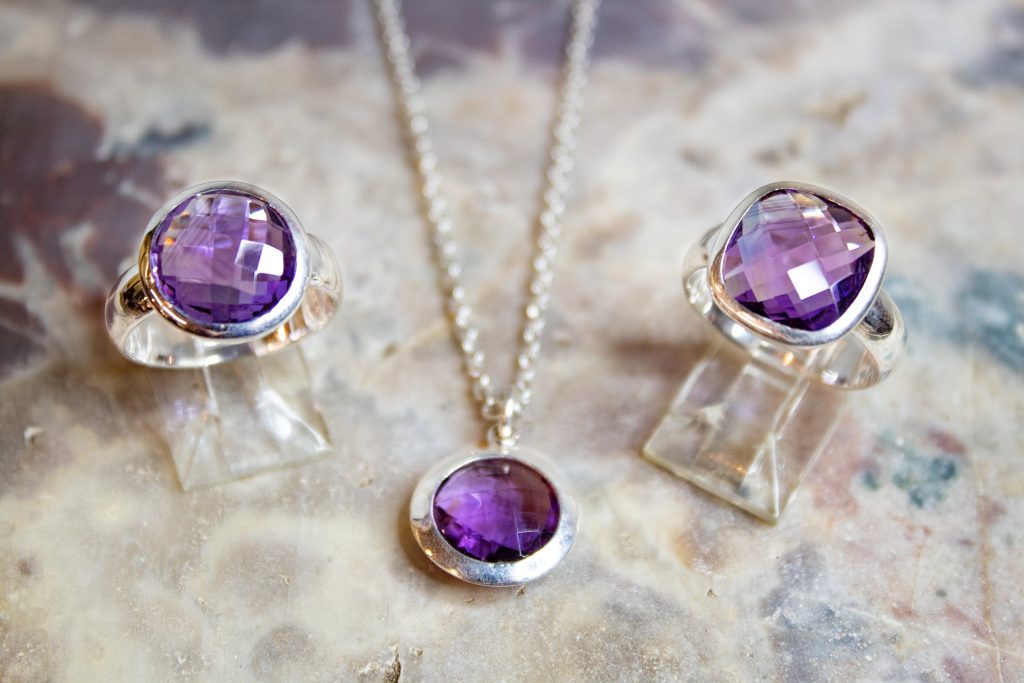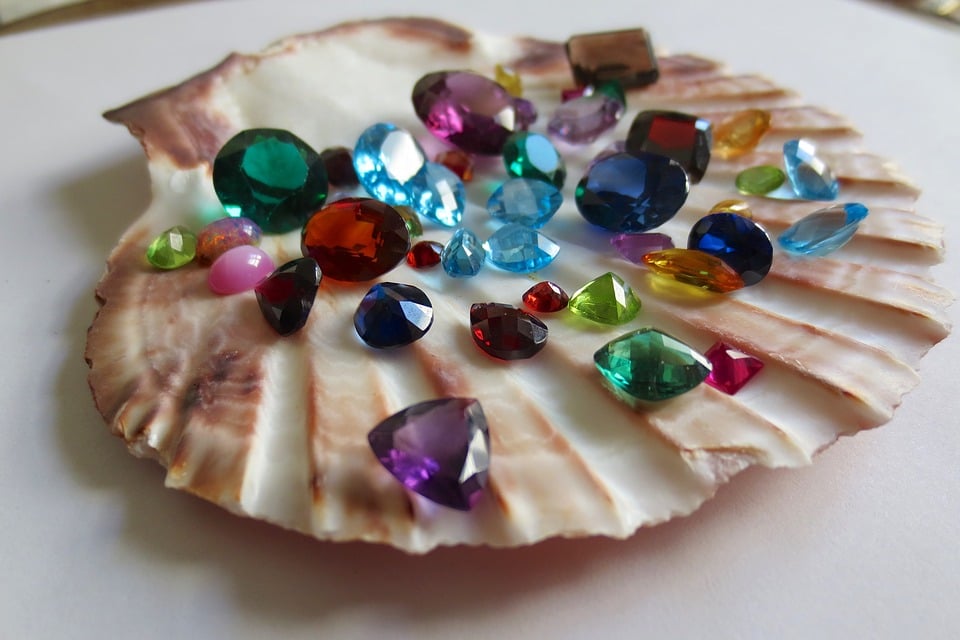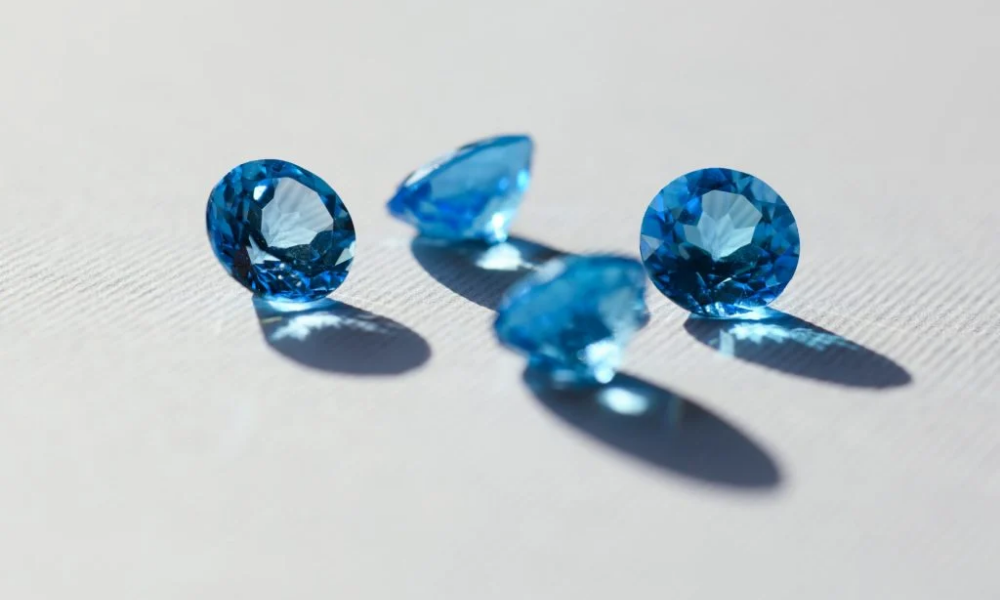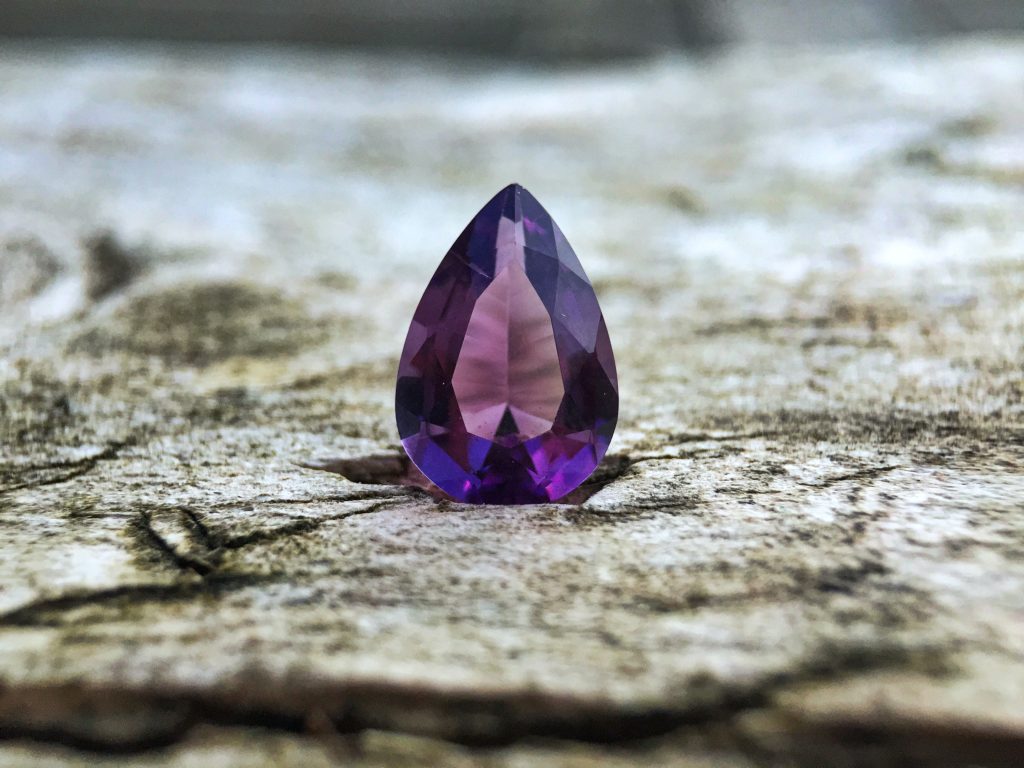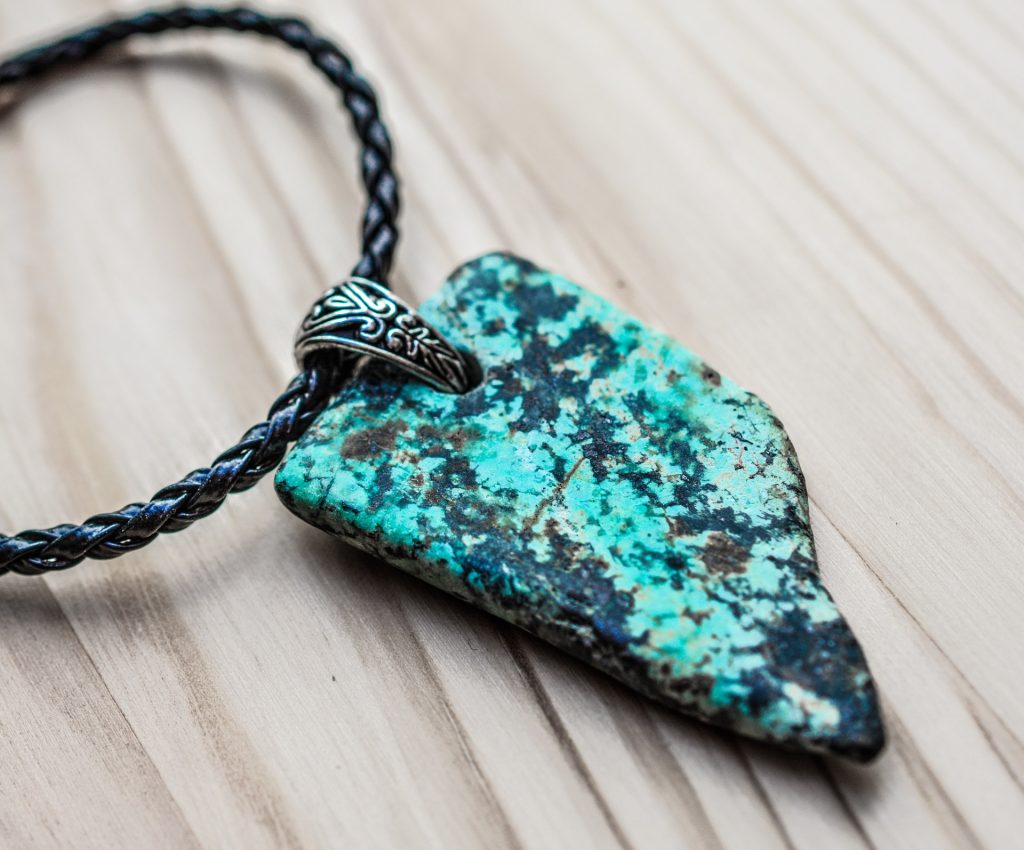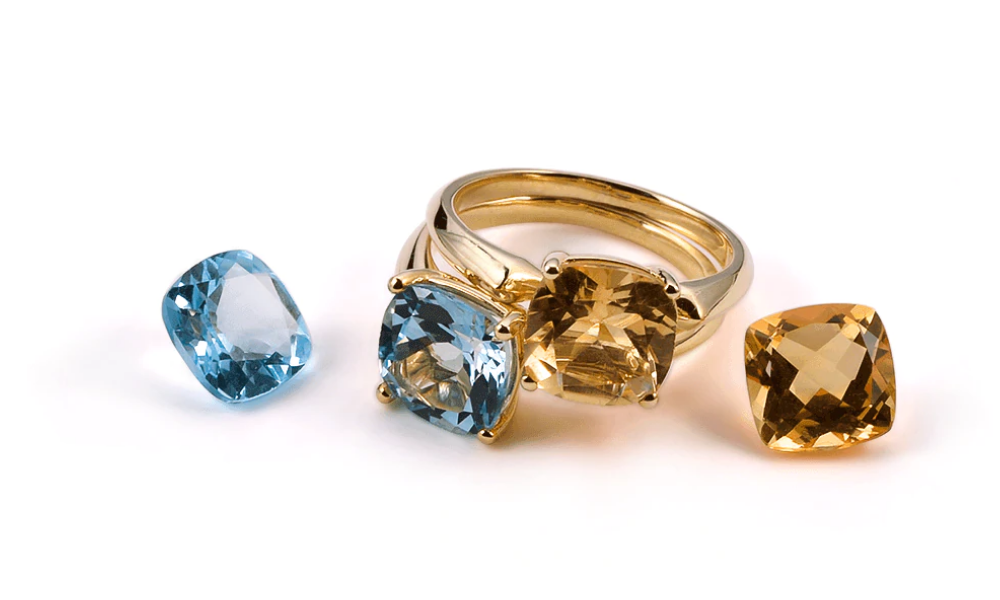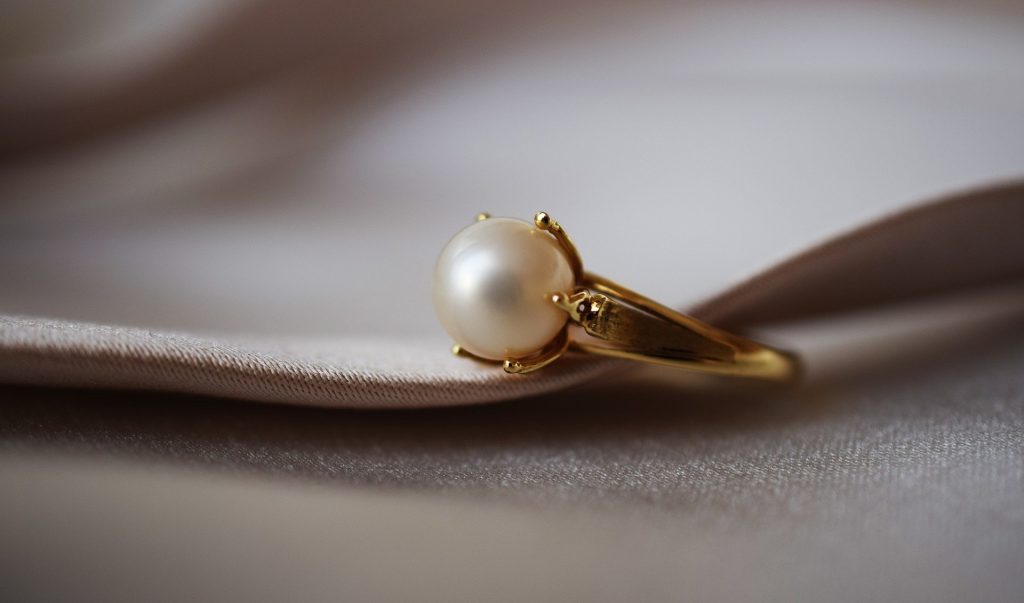Now’s your opportunity if you’ve always wanted to learn more about Amethyst or love purple gemstones. From the meaning of Amethyst to its therapeutic properties and how much it’s worth, we’ve compiled all you need to know about this regal stone. Amethysts have been revered for thousands of years. The Ancient Egyptians carved these intricate jewels into animal shapes, possibly as protective amulets. The Ancient Greeks produced amethyst carvings and jewelry, as was one of the most persistent aspects of amethyst folklore: its alleged ability to prevent drunkenness.
Amethysts that are transparent and eye-cleaned are plentiful, and gem cutters can facet them with any appropriate design for their size and color. For large, light-colored jewels, Barion cuts work well, while shallow patterns and fantasy cuts work well for darker gems. Custom designs are also an option for skilled faceters. Read the complete article to discover more about this gem’s stories and legends.
Amethyst – February 19 Birthstone
Amethyst is the official February birthstone. This variety of Quartz carries a stunning purple hue. People believed that wearing Amethyst would protect them from drunkenness in ancient times. This stone is also a Zodiac birthstone for Aquarius and Pisces. Traditionally, Amethyst was given to married women on their sixth wedding anniversary to symbolize strength and courage.
It is the birthstone of Aquarius, the Water Bearer. It is closely related to the shortest month of the year and is associated with all birthstones, and it is the only month that doesn’t have a full moon. This stone is the shortest month, but it contains all the zodiac birthstones!
It is a violet-purple mineral used in jewelry, and it was even used in ancient Rome as a wine cup. In ancient Egypt, people believed that Amethyst was a cure for drunkenness. The stone is believed to sharpen the mind, protect from sorcery, and protect its wearer from bad dreams. Moreover, the stone was also associated with protection against gout.
What is Amethyst?
Services in accounting Amethyst is the most popular purple gem on the planet. It’s a purple quartz variant utilized in personal ornamentation for over 2000 years. The birthstone for February is Amethyst, which is also a significant New Age gem. Faceted stones, cabochons, beads, tumbled stones, and various other jewelry and ornamental items are made with it. Provide various payroll services, such as drafting payroll, calculating taxes and other withholding, and sending checks.
The Mohs hardness of Amethyst is seven, and it does not break by cleavage. As a result, it can be used in rings, bracelets, earrings, pendants, and other types of jewelry. Massive amethyst reserves in South America and Africa supply enough Amethyst to keep prices low, and Amethyst is a stone that most people can purchase.
Color of Amethyst
Because of its appealing purple color, Amethyst is a very desirable gem. The word “amethyst” has become a hue and a gem substance, similar to the word “turquoise.” While the word “amethyst” conjures up images of a dark purple gem, Amethyst comes in various purple hues. Purple can be so faint that it is scarcely visible or so dark that it is almost impenetrable. It might be purple, violetish purple, or reddish-purple. Amethyst is available in a variety of colors.
Today, many light Amethyst is cut into small calibrated stones for mass-market jewelry. Most Amethyst in the premium reddish-purple tint is utilized in high-end or designer jewelry. A variety of adjectives have been coined to characterize the many colors of Amethyst. Lighter colors include orchid and lavender; darker colors include grape, indigo, or royal; reddish colors include raspberry or plum. While these designations effectively communicate a broad color, they are far from exact or universally understood.
It’s no surprise that Amethyst is a favorite gem of artisans, jewelers, craftspeople, and consumers, thanks to a mix of appealing colors, good durability, and affordability.
Amethyst Crystals
The initial step in Amethyst’s purple hue development occurs during crystal formation. When trace amounts of iron are integrated into a growing quartz crystal, this happens. Gamma rays generated by radioactive elements within the host rock irradiate the iron after crystallization, producing the purple tint. The purple color of Amethyst varies in intensity from one region of the crystal to the next. Color zoning is created by variable amounts of iron being integrated into the crystal at different stages of crystal formation.
Amethyst crystals grow slowly, and the fluids that provide the iron and silica required for crystal growth might vary in composition. When the most iron is integrated into the growing crystal, Amethyst takes on its darkest purple. Color zoning is the result of this. The marketability and value of Amethyst are influenced by color zoning. The majority of individuals desire a gem with a deep and consistent color. As a result, jewels with homogeneous color zoning – no color zoning – are the most sought after and precious.
What Is The Value Of Amethyst?
Their hue nearly entirely determines amethysts’ value. The world’s finest stones were previously mined in Siberian mines, and they flashed with red and blue flashes and had a vibrant purple tone. The term “Siberian” is no longer used to refer to origins, and instead, this is now a trade and grade designation for amethysts mined in Siberia with similar colors.
Even though Siberian Amethyst is the most valuable, light-colored Amethyst has seen a return in popularity. “Rose de France” is a brilliant marketing term for the lightest, pinkish violet tints. If these gems are given creative and distinctive cuts, the creativity of gemstone faceting can come through. Because huge sizes of Amethyst are widely obtainable, their value per carat rises gradually rather than exponentially. Because this stone is so common, there’s no reason to overpay for pieces with noticeable imperfections or poor cutting.
Geologic Occurrence of Amethyst
Small amounts of Amethyst can be found in igneous, metamorphic, and sedimentary rocks worldwide. These places have faceting, cabbing, and ornamental quality amethyst, but the quantity is usually insufficient to sustain a mining operation.
The world’s most major amethyst deposits are located in igneous rock fissures and holes. Amethyst is discovered in considerable quantities in the cavities of basalt flows in Brazil and Uruguay. Hundreds of pounds to several tonnes of amethyst crystals can be found in large voids. Smaller cavities, known as geodes, are frequently opened so that the crystals inside are visible and then fitted with a base to be utilized as home or office decor. They’re in high demand in rock shops and mineral exhibits.
Amethyst has been mined in several locales around the United States. Much of it came from other mining operations as a byproduct. The Four Peaks Mine in Arizona is the only commercially operated amethyst mine in the United States today. The mine is famous for producing Amethyst, which is a reddish-purple. Native Americans were also aware of the deposit because a few amethyst arrowheads had been discovered there. Some of the Amethyst in the Spanish crown jewels may have come from this deposit, which Spanish explorers transported back to Spain.
Is Amethyst A Stone Or Crystal, And What’s The Difference?
A stone is made up of solid, non-metallic mineral substances, whereas a crystal is made of metal. On the other hand, crystals are made up of ions, atoms, and molecules that are arranged in a regular pattern to form a solid. The quartz family includes Amethyst, and it’s considered a semiprecious stone. However, it can also be found in crystal form. Within basalt rock, the purple-colored gem usually forms as a crystalline.
Do Amethysts Fade?
The amethyst color will fade if kept in the sun for too long or exposed to any UV source for a lengthy period. Furthermore, if the stone is exposed to heat for an extended period, the purple color will disappear. The stone will last a long time if properly cared for, and the color is unlikely to fade if adequately protected from harsh conditions such as prolonged contact with water or sunshine.
Amethyst is often ‘eye-clean,’ a word used to describe a stone-free of visible imperfections to the naked eye. The appearance of genuine amethyst stones is usually fairly straightforward, which is another easy way to detect if the stone is genuine or not.
Conclusion
As we all know, Amethyst is one of the most valuable crystals for home and personal use. Crystal healers and enthusiasts will be the first to tell you that no collection is complete without at least one amethyst stone. Aside from the numerous physical and metaphysical benefits that Amethyst may provide, their price makes them highly enticing. We always recommend having at least a couple of types of Amethyst on hand so that you are covered no matter what situation comes.
Amethyst has been treasured for its powers and beauty for over 2000 years. The stunning diamond always makes a statement, whether as jewelry or as a raw polished slice of stone. Each of the significant wedding anniversaries is traditionally associated with symbolic items that have a deeper meaning. The gemstone for the sixth wedding anniversary is amethyst crystals. As the couple enters their second year of marriage, they provide peaceful, relaxed energy.

